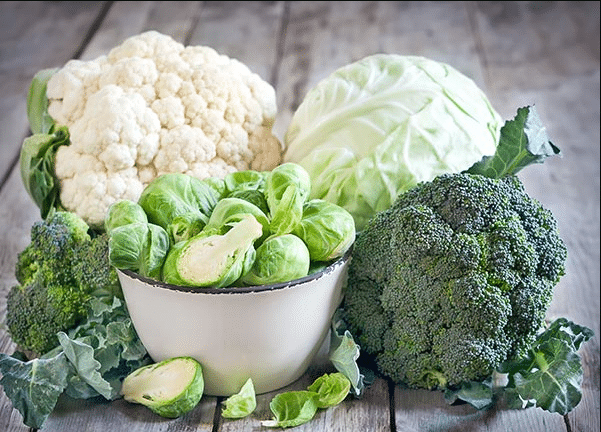Beginners Guide to Cruciferous Vegetables

When it comes to nutrition, there’s a group of vegetables that often stands out for their health benefits and unique flavors – the cruciferous vegetables. Packed with essential nutrients and known for their potential to support overall health, cruciferous vegetables are a must-add to your diet. In this beginner’s guide, we’ll delve into what makes these veggies special, their benefits, and how to incorporate them into your meals.
What are Cruciferous Vegetables? Cruciferous vegetables belong to the Brassicaceae family, which includes a wide range of nutrient-rich plants. These veggies are characterized by their cross-shaped flowers, which is where the term “cruciferous” originates. Some well-known cruciferous vegetables include broccoli, cauliflower, kale, cabbage, Brussels sprouts, and bok choy.
Nutritional Powerhouses: Cruciferous vegetables are nutritional powerhouses, rich in vitamins, minerals, fiber, and bioactive compounds. Here are some key nutrients commonly found in cruciferous veggies:
- Vitamin C: Known for its immune-boosting properties and role in collagen formation.
- Vitamin K: Essential for bone health and blood clotting.
- Folate: Important for cell division and DNA synthesis.
- Fiber: Supports digestion, promotes satiety, and helps maintain a healthy weight.
- Glucosinolates: Natural compounds that have been linked to potential cancer-fighting effects.
Health Benefits: Incorporating cruciferous vegetables into your diet can offer numerous health benefits:
- Cancer Protection: The glucosinolates found in these vegetables may help activate enzymes that play a role in detoxifying and eliminating potential carcinogens.
- Heart Health: Their high fiber content can help lower cholesterol levels, reducing the risk of heart disease.
- Bone Health: Vitamin K and calcium in cruciferous vegetables support bone strength and density.
- Digestive Health: Fiber aids in digestion and promotes a healthy gut microbiome.
- Anti-Inflammatory Properties: The antioxidants and phytonutrients present in these veggies may help reduce inflammation in the body.
Incorporating Cruciferous Vegetables: Here are some creative ways to include more cruciferous vegetables in your meals:
- Roasted Delights: Toss cauliflower, broccoli, or Brussels sprouts with olive oil, seasonings, and roast until crispy for a delicious side dish.
- Stir-Fries: Add bok choy, kale, or broccoli to your stir-fries for a nutrient boost.
- Creamy Soups: Blend steamed cauliflower or broccoli into soups for a creamy texture without heavy cream.
- Crunchy Salads: Create vibrant salads by adding cabbage, kale, or Brussels sprouts as a base.
- Cauliflower Rice: Use grated cauliflower as a low-carb alternative to rice in dishes.
Tips for Cooking and Storage: To maximize the benefits of cruciferous vegetables, keep these tips in mind:
- Cooking Methods: Steaming, roasting, and stir-frying are great cooking methods that help preserve the nutrients.
- Storage: Store unwashed cruciferous vegetables in a cool, dry place or the refrigerator’s crisper drawer to maintain freshness.
- Avoid Overcooking: Overcooking can lead to nutrient loss and a less appealing texture.
Incorporating cruciferous vegetables into your diet is a fantastic way to support your health while enjoying a variety of flavors and textures. From cancer-fighting properties to heart health benefits, these veggies offer an array of reasons to make them a staple in your meals. So, the next time you’re at the grocery store, don’t forget to pick up some broccoli, cauliflower, or kale and embark on a journey of flavorful nutrition.
You can check this website too for a great content about “The Beginners Guide to Cruciferous Vegetables at 5 Steps“. Also you can check our content for more information about “Healthy Diets“.




























Leave a Reply